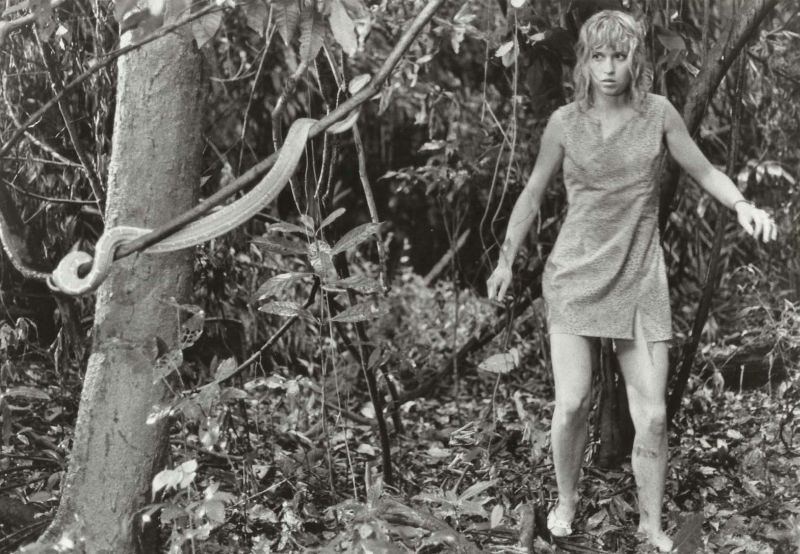★★★½
“End of days”
 I think it was only as the end credits were rolling, that I perhaps appreciated this series fully. Sure, in many ways, these films have been a poor man’s Lord of the Rings knock-off, with a disparate band of hardy adventurers on a quest to stop Ultimate Evil (TM) from taking over. But, dammit, I found myself enjoying them, appreciating their smaller-scale charms and actually liking the characters – possibly even more than Frodo. While this finale doesn’t sustain the non-stop pace of its most recent predecessor, it does a good job of tying up all the loose ends. And if you’ve watched all five, and don’t have a slight moistness around the eyes at the end, you’ve a harder heart than I.
I think it was only as the end credits were rolling, that I perhaps appreciated this series fully. Sure, in many ways, these films have been a poor man’s Lord of the Rings knock-off, with a disparate band of hardy adventurers on a quest to stop Ultimate Evil (TM) from taking over. But, dammit, I found myself enjoying them, appreciating their smaller-scale charms and actually liking the characters – possibly even more than Frodo. While this finale doesn’t sustain the non-stop pace of its most recent predecessor, it does a good job of tying up all the loose ends. And if you’ve watched all five, and don’t have a slight moistness around the eyes at the end, you’ve a harder heart than I.
It has all been building to this. Evil necromances Szorlok (Mercer) has put into operation his plan for world domination, using a vast and still growing army of the possessed – and as the title suggests, intends to wipe out the gods, leaving him in sole charge. Can he coerce Marek (Stone) to join him, saying it’s the only way the mass slaughter can be stopped? Or can she and her group of friends track down the Hammer of Tek, the long-lost artefact once wielded by a legendary king, and the only thing capable of shattering Szorlok’s Darkspore, stopping his bid for power? However, if they succeed, what will be the personal cost?
It certainly has been a journey, particularly for Marek, who began as a slave girl with no inkling of the power she held within her, and ends up going toe-to-toe with the darkest force around. Here, her battles are as much mental as physical, since she has to weigh Szorlok’s offer. Is it okay to join up with evil in order to save others? Her moral compass – Jiminy Cricket, if you like – is the half-elf thief Dagen (Stormoen), who not only has to try and keep her focused, but also venture into the underworld, in search of that pesky hammer. [Tek is played by Kristian Nairn, a name you might recognize from another fantasy series. If not, this should be a clue: “Hodor!” Yep: he gets more than that one word here, too…] While Marek is the heroine, it is an ensemble piece, and the others get their moments of bravery and sacrifice too.
The technical aspects are certainly improved from the early days. The Kickstarter alone for this one raised over $131,000, and if sometimes short on the epic scale we’ve come to expect from Peter Jackson, it still has occasional moments where it punches above its weight. But I think it’s really the characters which are the heart of this, as with any good story. What seemed initially like a collection of four cast-offs from a bargain-bin Dungeons & Dragons campaign, have ended up becoming individuals I found myself caring about, and for all the low-budget flaws, I’m genuinely sorry this is the end of the saga. The series proves you don’t need $100 million to make a movie, and also that entertainment value is not strictly correlated to your budget.
Dir: John Lyde
Star: Melanie Stone, Jake Stormoen, Adam Johnson. Matthew Mercer





 ★★½
★★½ Admittedly, Juliane Koepcke was not your average teenager. Indeed, she could hardly have been better prepared for her ordeal. Her family moved to a research station in the Peruvian rainforest when she was 14, so her father, zoologist Hans-Wilhelm Koepcke, could continue his work. Juliane was initially home-schooled, and the curriculum covered much more than the traditional three R’s.
Admittedly, Juliane Koepcke was not your average teenager. Indeed, she could hardly have been better prepared for her ordeal. Her family moved to a research station in the Peruvian rainforest when she was 14, so her father, zoologist Hans-Wilhelm Koepcke, could continue his work. Juliane was initially home-schooled, and the curriculum covered much more than the traditional three R’s.  The authorities hadn’t been able to locate the crash site, but with Juliane’s help, they found it, and her mother’s body was eventually recovered on January 12, more than three weeks later. The
The authorities hadn’t been able to locate the crash site, but with Juliane’s help, they found it, and her mother’s body was eventually recovered on January 12, more than three weeks later. The